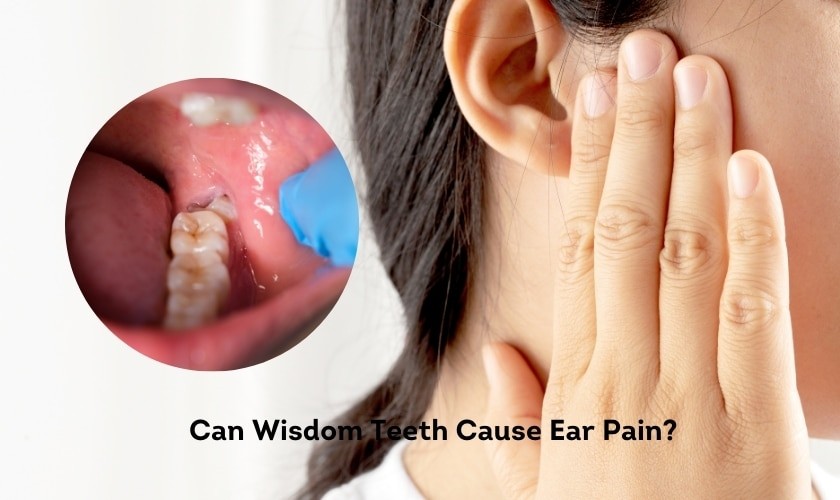Wisdom teeth—your third molars—typically emerge between ages 17 and 25. While some people never encounter issues, for many, these late-blooming teeth bring problems like pain, infection, shifting of other teeth, and even cysts. Deciding whether to remove them involves weighing their current condition, future risks, your age, and personal comfort level.
What Wisdom Teeth Can Cause
- Impaction
When there’s not enough space in your jaw, wisdom teeth can grow at odd angles or become trapped beneath your gums—a condition called impaction. These teeth often go unnoticed at first but can later cause pain, swelling, or damage to adjacent teeth.
- Gum Infection
Only part of an impacted tooth may emerge, creating a food trap and a breeding ground for bacteria. This often leads to gum swelling, tenderness, bad breath, and sometimes recurring infections called pericoronitis .
- Cavities & Gum Disease
Wisdom teeth—especially those that are partially erupted—are hard to clean. This increases the risk of cavities in the wisdom tooth itself or even the neighboring molar. Left unchecked, bacteria can also cause gum disease .
- Crowded Teeth or Bite Issues
Growing wisdom teeth can push against adjacent teeth, causing crowding or misalignment. This can undo earlier orthodontic work and affect your smile’s appearance.
- Cysts or Bone Damage
A small fluid-filled sac (cyst) can form around an impacted tooth. In rare cases, this sac can damage bone, roots, or nerves—even leading to jaw weakening.
When Removing Is Recommended
Here’s when most dentists advise taking action:
- Persistent pain or swelling around a wisdom tooth
- Recurring gum infections (pericoronitis)
- Damage to neighboring teeth—such as cavities or pressure
- Evidence of cysts/tumors or bone damage around the tooth
- Risk to orthodontic alignment—if wisdom teeth could crowd or shift other teeth
But What If They’re Not Causing Issues?
There’s debate about removing asymptomatic (problem-free) wisdom teeth:
- Early removal (late teens to early twenties) is often easier and quicker to heal, as roots and bone aren’t fully developed.
- Yet, studies show no certain benefit in removing healthy, pain-free wisdom teeth versus monitoring them carefully.
- Risks still exist—like nerve damage, dry socket, swelling, and potential fracture—especially if surgery is done later in life.
Ultimately, decisions should be personalized—considering your symptoms, X-ray findings, age, and preferences .
Why Age Matters
- Teenagers and young adults typically heal faster, with less complex surgery and lower risks.
- After age 25–30, wisdom teeth roots are fully formed and bone is denser—making extraction trickier and recovery longer .
- Older adults may also face higher risks like nerve injury or jaw complications during extraction .
So, if your wisdom teeth are showing early signs of trouble—even without pain—it might be wise to act sooner.
What Extraction Involves
- Diagnosis via exam and X-rays to assess wisdom teeth position, root development, and proximity to nerves .
- Anesthesia—local, sedation, or general, depending on your comfort and complexity of extraction .
- Surgical removal—the surgeon may cut gum tissue, remove bone, and extract the tooth whole or in pieces.
- Stitches and recovery, usually with gauze to form a clot and prevent dry socket .
- Post-op care—soft diet, rest, ice, and ibuprofen or acetaminophen to manage pain and swelling . Recovery typically spans one week, with full healing in a few weeks .
Risks to Be Aware Of
- Dry socket—when the blood clot is lost, causing severe pain 4–5 days after surgery
- Infection—marked by swelling, fever, or foul taste; antibiotics may be needed.
- Nerve injury—temporary or, rarely, permanent numbness of the lip, chin, or tongue; incidence varies based on root position and surgeon skill.
- Jaw issues—limited opening or stiffness may occur temporarily .
- Bleeding or bone fracture—rare but possible especially with deep impactions or anticoagulant use.
What You Should Ask Your Dentist
When contemplating wisdom tooth removal, these questions can guide you:
- Are my wisdom teeth impacted or likely to cause issues?
- Would waiting allow problems to worsen or simplify removal later?
- What will recovery look like—and how much time off should I plan?
- What steps can I take to reduce risks and aid healing?
- Can you explain all treatment options and costs?
Aftercare: Do’s & Don’ts
Do’s:
- Bite gauze firmly to stop bleeding
- Rest and keep head elevated for 1–2 days
- Apply ice for 15–20 minutes intermittently
- Eat cool, soft foods (yogurt, smoothies, mashed potatoes) for several days
- Take pain relievers and antibiotics as prescribed
- After 24 hours, rinse gently with warm saltwater several times a day
Don’t:
- Smoke, use straws, or spit forcefully—risking dry socket
- Eat hot, spicy, crunchy, or sticky foods
- Brush around the extraction site during the first day
- Ignore symptoms: uncontrolled bleeding, fever, or intense pain
What We Offer at Our Clinic
At Oral Medics Dental Clinic & Implant Centre, we make wisdom‑tooth (third molar) removal straightforward and stress‑free—from digital X‑rays to understand your teeth, to gentle numbing (and sedation if you wish) so you stay comfy during the procedure. After the extraction, we guide you through simple aftercare steps—to help you heal smoothly. We follow up in person or online to check your recovery.
Next Steps
- Schedule a dental exam with X-rays to evaluate your wisdom teeth.
- Ask candid questions about risks, benefits, alternatives, and recovery.
- Follow the personalized recommendation—whether monitoring or removal—and plan accordingly.
- By understanding the facts and options, you can confidently decide what’s best—protecting both your smile and your well-being.

